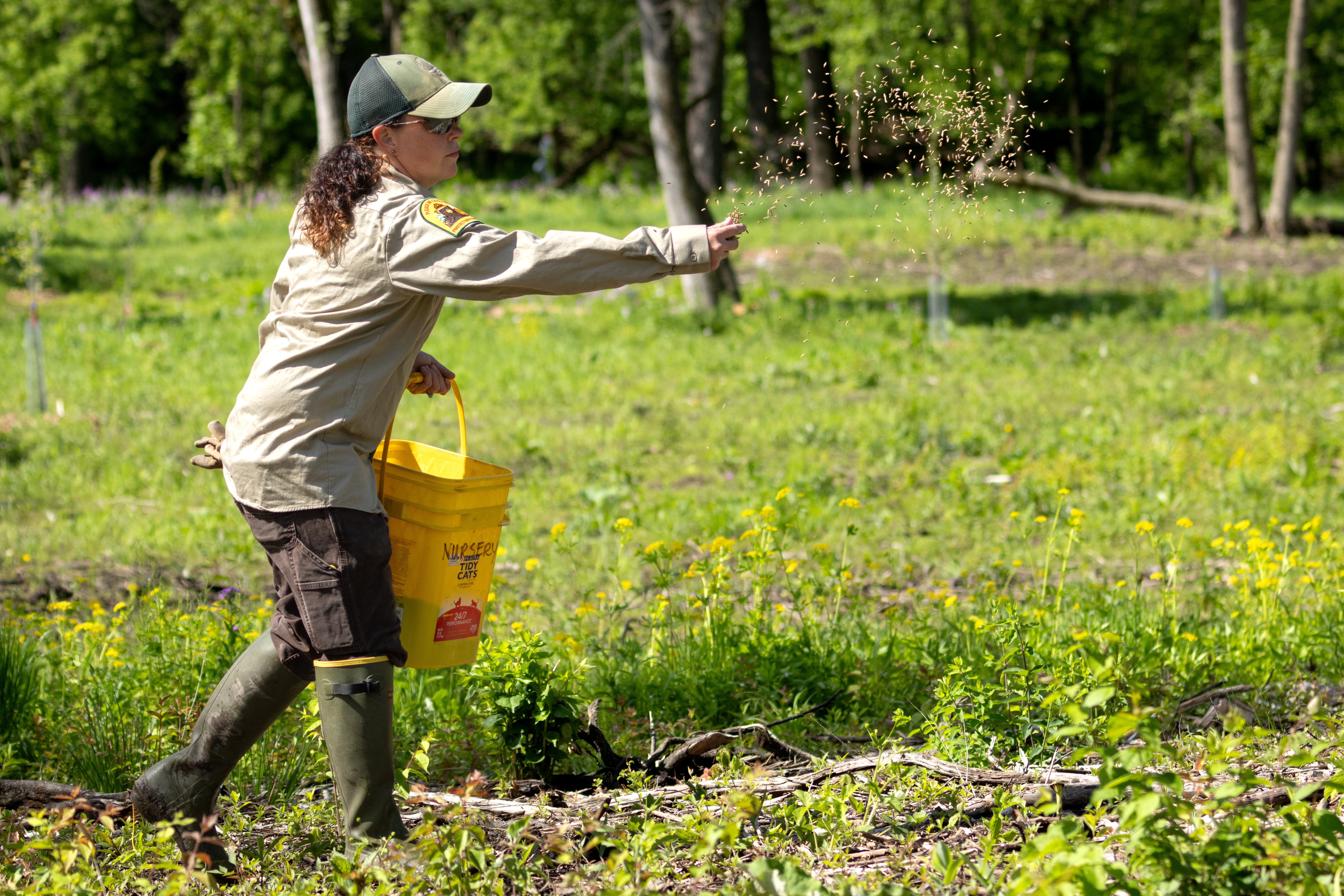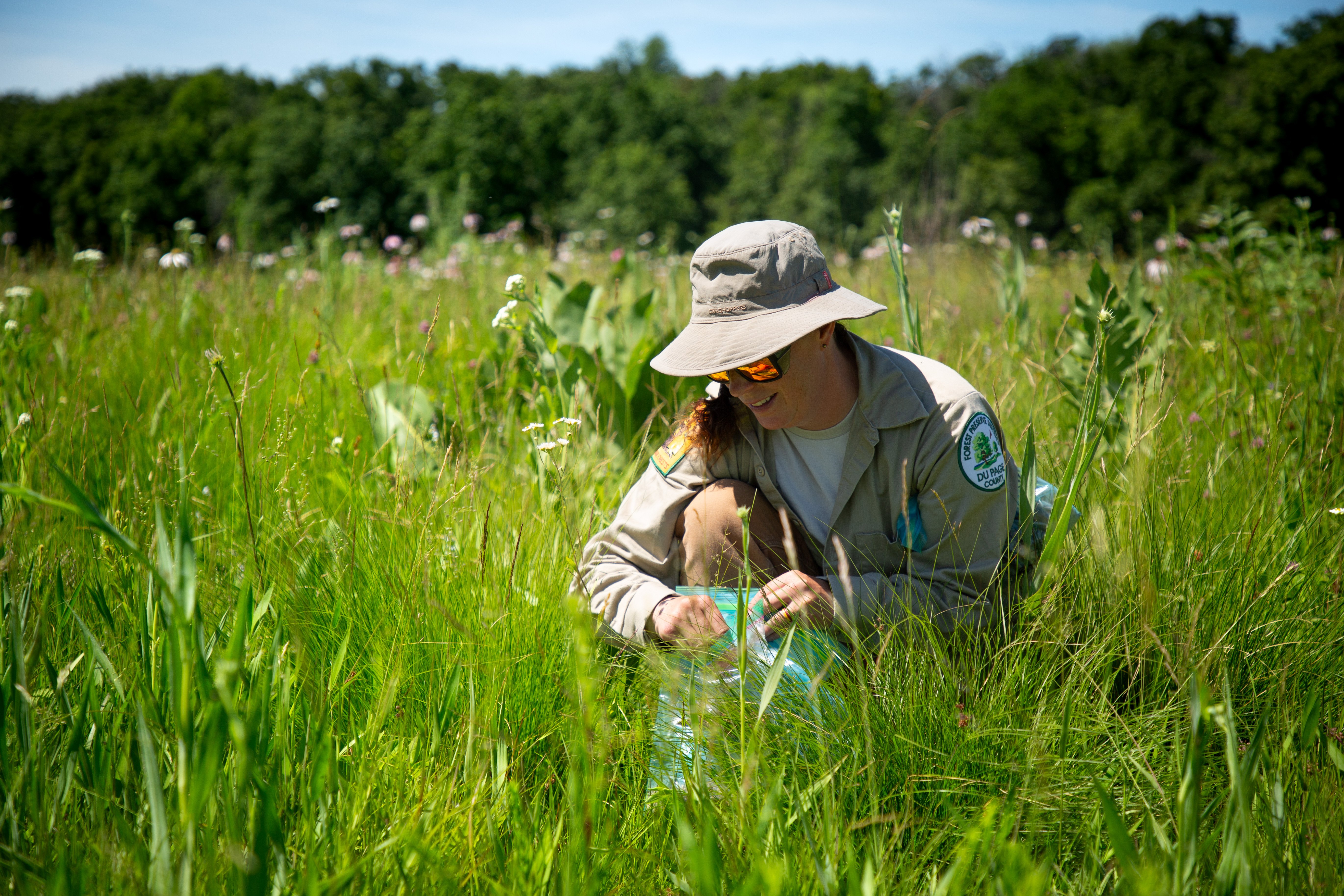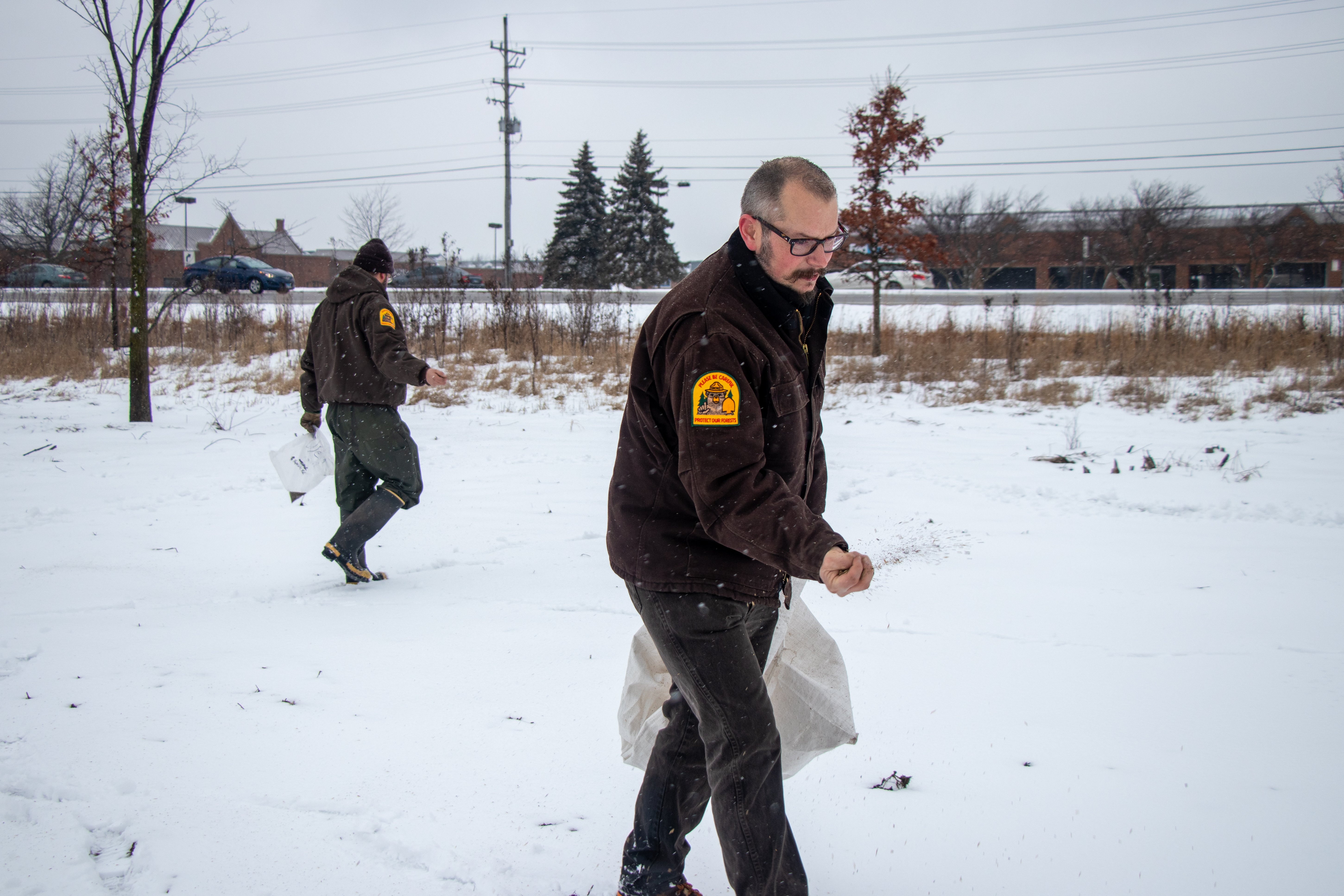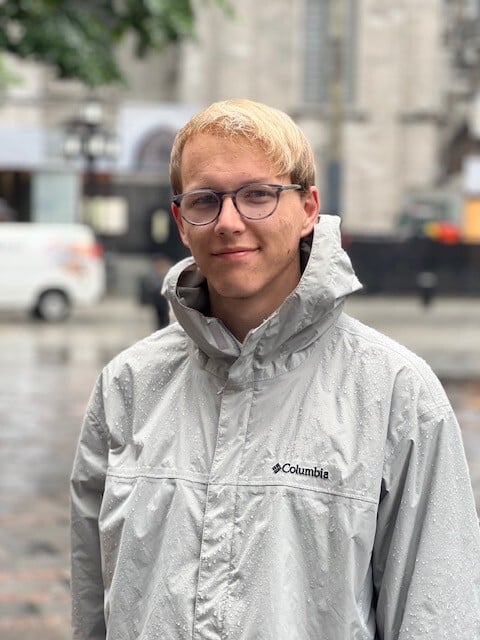
On one of the first warm days of spring, Natural Resources senior maintenance tech Tanya Ziobrowski stood in Glasshagel Prairie at Timber Ridge Forest Preserve in West Chicago. She’d originally been scheduled to report 13 miles south at Night Heron Marsh that day, but because the rain held off, she and her team moved locations with about one hour’s notice. “That’s the name of the natural resources game,” Ziobrowski said.
Ziobrowski has been playing that game for 13 years, 11 at the Forest Preserve District. For several of those years, Ziobrowski has overseen the District’s Native Seed Program. Among the District’s many preserves, there’s perhaps no better place to witness the fruits of her team’s labor than Glasshagel.
“20 years ago, this was all corn or soybeans or whatever they were planting that year,” Ziobrowski said, gesturing to a field of native grasses stretching into the distance. “My first year, the District did another big seeding here.”
Repopulating former agricultural fields like Glasshagel with native plants is not the Native Seed Program’s sole priority. In fact, the District is re-seeding natives mostly because, according to Ziobrowski, many of its 26,000 acres of preserves are infested with nonnative plants. These invasive species complicate restoration efforts, overpowering native plants by taking up valuable soil, water, and sunlight.
“The reason why we clear out nonnatives like buckthorn and honeysuckle is because these lands were established with native plants at one point,” Ziobrowski said. “Then all those lower-growing shrub invasives came in. We want to compete with the non-natives.”
To gain a competitive edge, the District started its Native Seed Program decades ago. In the past three years, its work has fully taken off: The program collects, processes, and distributes millions of individual native seeds every year.
The first step, collection, starts in early May. Exactly where and when District employees can start sometimes literally depends on which way the wind blows. A rainstorm can halt a day’s work. Some seeds are dispersed by insects, leaving the collection team a small window to snatch seeds up before the bugs. “Timing,” Ziobrowski said, “is everything.”

Timing when to collect seeds in spring poses an annual challenge.
The target is especially small for early spring ephemerals, plants like Dutchman’s breeches, spring beauty, and sharp-lobed hepatica that carpet Illinois woodlands for only a few short weeks.
“There’s no competition in early spring,” Ziobrowski said. “Nothing else is really growing. The ephemerals come up in the woodlands, grow quickly, and then die off before all the leaves on the trees fill in.”
The ephemerals’ offspring are just as fragile.
“We’ll go out and collect those seeds and then they have to be spread right away. They don’t like to dry out. They don’t like long-term storage,” Ziobrowski said.
Other plants, however, are much hardier. So much so that they must withstand picking, stripping, drying, compacting, freezing, and thawing (stratified) before finally germinating. That might sound like medieval torture to some, but for the District’s Natural Resources team, it’s simply called “processing.”
“When you go out and collect seed, you’ll get a whole head, but you don’t know exactly how much of the head is actually seed,” Ziobrowski said. “You mostly have a bag with a bunch of chaff — the stuff you don’t need. You don’t need the stalk, you don’t need the leaves.”
Shortly after collection, the seed’s chaff is removed, stripping it down to a core ready for drying — a job most efficiently completed by an octopus.
Imagine an elevated box with eight attached hoses. Each one is blasting air from a central fan into its own 55-gallon tub, filled to the brim with seed. This appropriately named “octopus dryer” will vastly accelerate processing and cleaning the seeds for long-term storage.
Ziobrowski: “If the seeds you’re storing aren’t dried, they’re going to mold. Viability goes down if you don’t clean it and dry it properly. We don’t have a lot of storage, so we have to get it down to a clean seed.”
Where to put the seed when it’s clean has been a complicated exercise; no nook or cranny is ruled out. Ziploc bags, old refrigerators, and even the floor have been used to dry and store seeds. Fortunately, the District recently broke ground on a new Grounds and Natural Resources Complex at Blackwell Forest Preserve in Warrenville, which will include a Nursery Operations Building. 60 percent of this building’s 5,000 sq. ft. footprint will be an octopus’ garden — dedicated entirely to processing seed with multiple driers whirring away. Zero percent will be piled with uncontained, drying seed.
The new Nursery Operations Building (kNOB) will also house significant financial assets. Ziobrowski estimates that the Native Seed Program handles about half a million dollars-worth of seed each year. However, that massive figure still doesn’t fully capture the value of some of the program’s stock.
“What we collect every spring has local genetics,” Ziobrowski pointed out. “It’s hard to put a price tag on preserving our local floral genetics; you can’t find those on the market. And the spring ephemerals, too, are almost impossible to buy because they can’t dry out. They’re priceless.”

District staff spread seeds in winter so they can germinate in spring.
Usually, priceless assets aren’t packed into a leaf blower, but that’s exactly what the Native Seed Program does every winter. After a long summer and fall spent collecting and processing, District staff bundle up and spread their processed native seed across nearly all 60 preserves.
“The process of freezing and thawing throughout the winter months — called ‘moisture stratification’ — breaks the seed’s hard outer shell, allowing for germination in the spring,” Ziobrowski said. But just because winter has cracked a seed’s shell, they don’t always immediately take root.
“When you see plants sprout up, that didn’t happen overnight, it’s not an instantaneous thing,” Ziobrowski said, looking out at the former crop field that’s now Glasshagel Prairie. “It’s going to take two to three growing seasons before you actually see things out there. When we clear an area of invasive species, it might look rough at first. But with a little bit of seed, time, and a lot of effort by our crews, these areas will look beautiful again.”
Gabe Lareau
